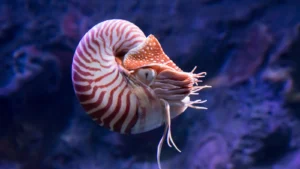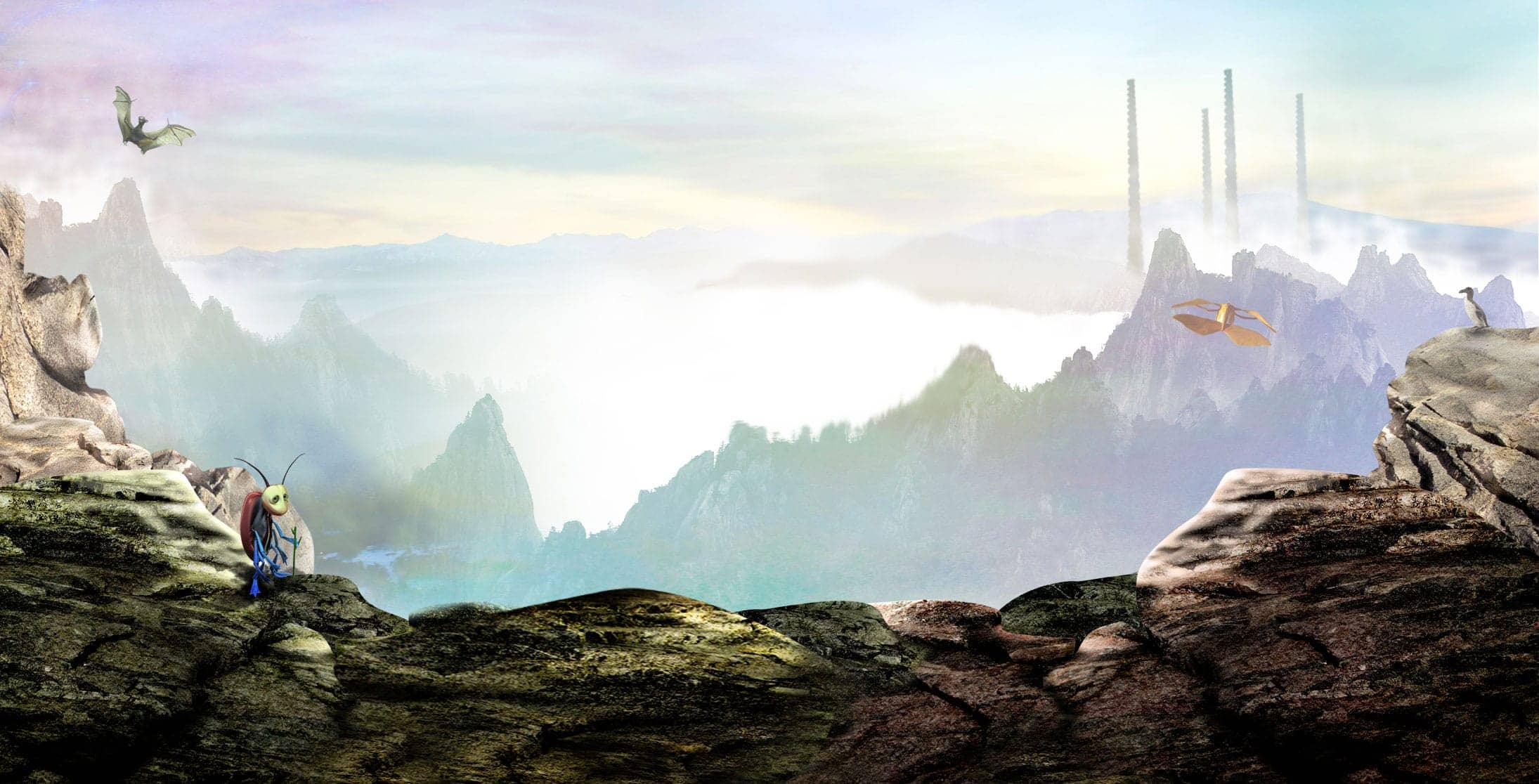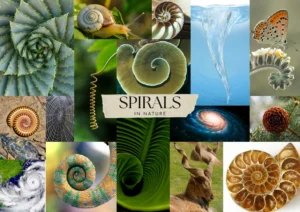After celebrating World Octopus Day, today we turn to the ocean’s quietest survivors, the nautiluses and their long-extinct relatives. Nautilus Night celebrates these spiral-shelled cephalopods that shaped life in Earth’s ancient seas and continue to glide, almost unchanged, through the deep.
At Rockford’s Rock Opera, it’s also a perfect moment to reflect on the mysteries of deep time, the fossils, the spirals, and the stories that inspired Lost on Infinity.
What Is Nautilus Night?
Running from 8th to 12th October, the International Cephalopod Awareness Days celebrate the intelligence, creativity, and beauty of the ocean’s most extraordinary animals:
- 8 Oct – Octopus Day
- 9 Oct – Nautilus Night
- 10 Oct – Squid & Cuttlefish Day
- 11 Oct – Kraken Day
- 12 Oct – Fossil Day
Nautilus Night shines a light on the living fossils of the sea — the nautiluses, and the long-lost ammonites, orthocones, and belemnites that once ruled prehistoric oceans.

Chambered Nautilus, swims by jet propulsion
🌀 The Spiralling Story of the Nautilus
The nautilus is an extraordinary survivor. It has lived on Earth for more than 500 million years, weathering every mass extinction event since the dawn of complex life.
Its shell is divided into gas-filled chambers that let it move up and down like a natural submarine. This shell follows a perfect logarithmic spiral, a design found across nature, in galaxies, hurricanes, flowers, and even the Island of Infinity in Lost on Infinity, where time itself spirals inward to the Fossil Record Office.
You can read more about spirals in our recent blog Spirals in Nature.
🪸 Ammonites and Belemnites – The Fossil Artists of the Deep
Ammonites, now extinct, were close relatives of the nautilus. Their intricate shells, from thumbnail size to car-tyre diameter, are among the most beautiful fossils ever found.
Belemnites looked like squid with internal bullet-shaped shells, while orthocones were long, straight-shelled ancestors that grew several metres in length.
All of them vanished around 66 million years ago, alongside the dinosaurs, leaving behind spirals carved in stone.
Those spirals aren’t just fossils, they’re nature’s timekeepers.
🌍 What We Can Learn from Living Fossils
Today, living nautiluses inhabit deep reefs of the Indo-Pacific. They rise at night to feed and sink again before dawn, gliding silently in waters too dark for most eyes.
But they’re under threat. Hunted for their beautiful shells and affected by warming seas, their numbers have fallen sharply. In some regions, they’re now classed as vulnerable to extinction.
Protecting them means preserving one of the oldest lineages of life on Earth, a direct connection to our planet’s deep history.
꩜🐚🦑꩜🐚🦑꩜🐚🦑꩜🐚🦑꩜🐚🦑꩜🐚🦑꩜🐚🦑꩜🐚🦑꩜🐚
Discover more through story and song
At Rockford’s Rock Opera, we believe nature’s resilience can inspire both science and imagination. Our story Lost on Infinity explores extinction, biomimicry, and the secrets of the natural world through an unforgettable musical adventure. In Lost on Infinity, we meet Colonel Utensil, the ten-legged Dectopus who leads the Extinct Squid Squad, guardians of the past who carry messages of hope for the future.
Get the Lost on Infinity illustrated book with free musical audiobook – a totally immersive experience.
Listen to the first part of the Lost on Infinity audiobook and watch the animated adventure free on Apple App Store and Google Play.
Download our FREE lesson plans and slides about Extinction and Biomimicry. We also have a selection of classroom activities on our website.
For even more exploration of the natural world, tune in to our Stories, Science & Secrets podcast for kids. Join Matthew, Elaine, Steve Punt and special guests, as we delve into the fascinating world of biomimicry and the inspiring ways science learns from nature’s genius.
Biomimicry (learning from nature) is a fascinating classroom topic. You can read more about biomimicry and see all the discoveries we have documented in our Creatures’ Secrets Database.


